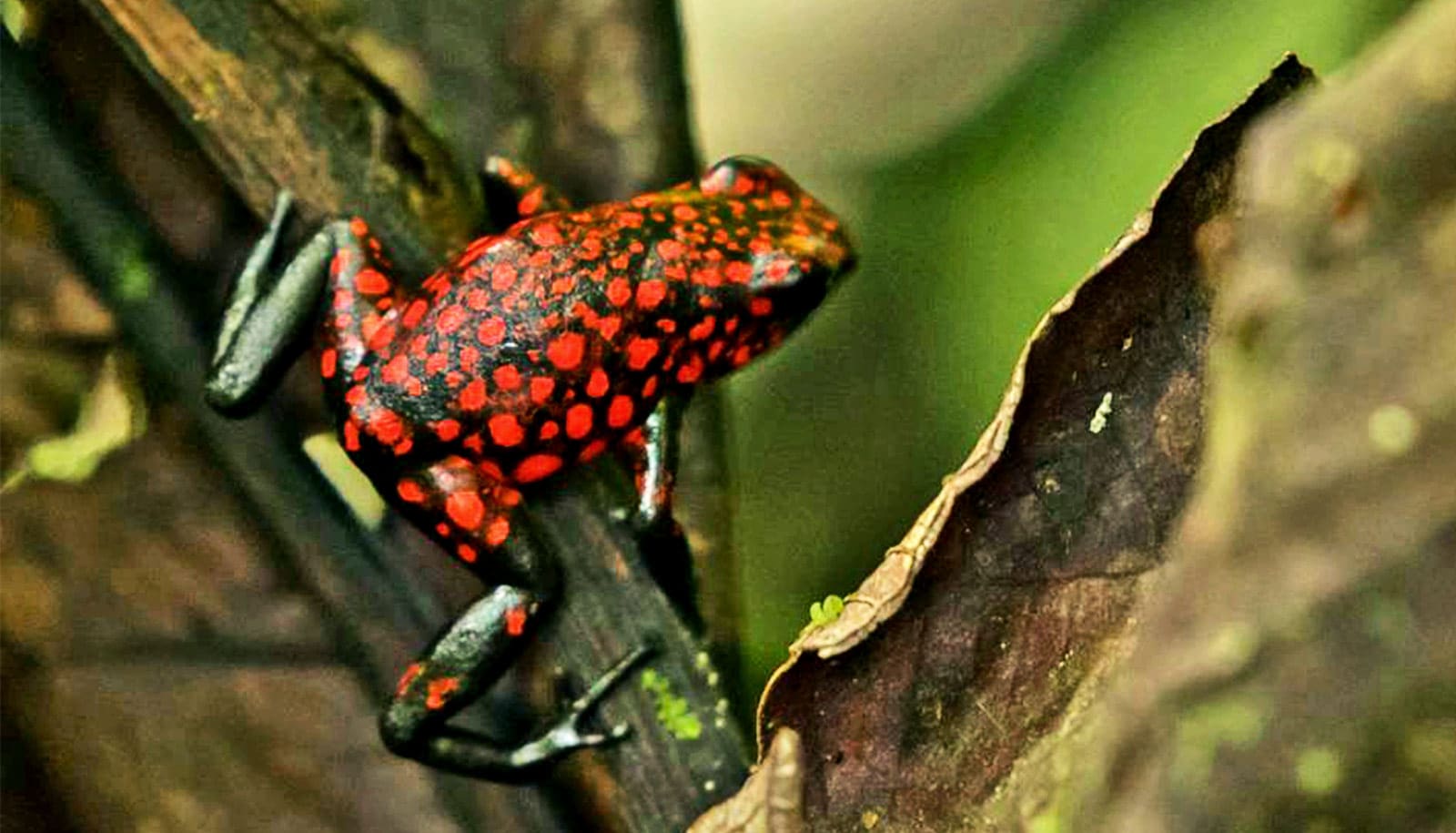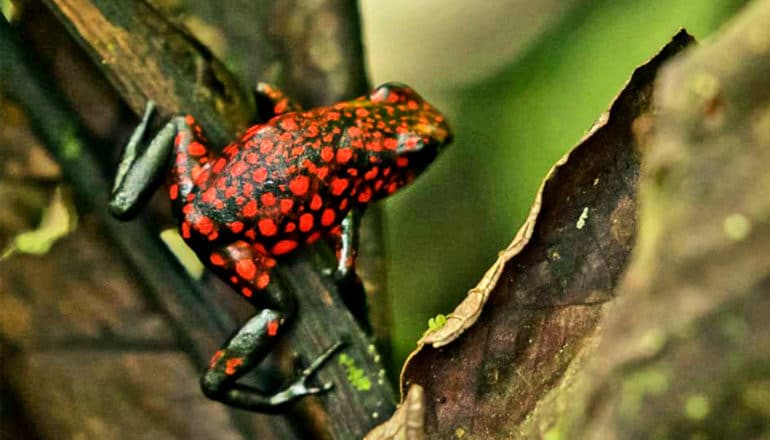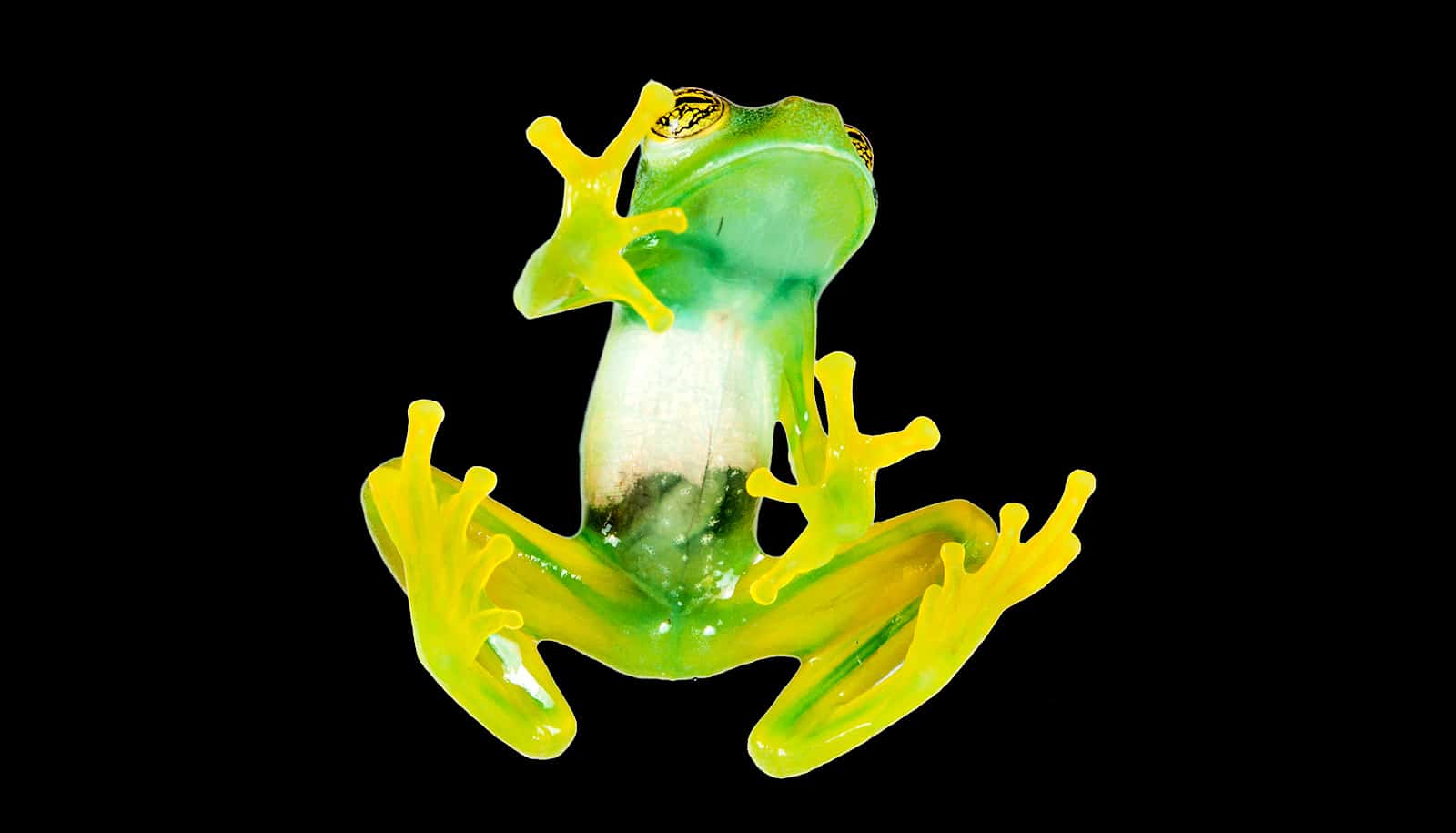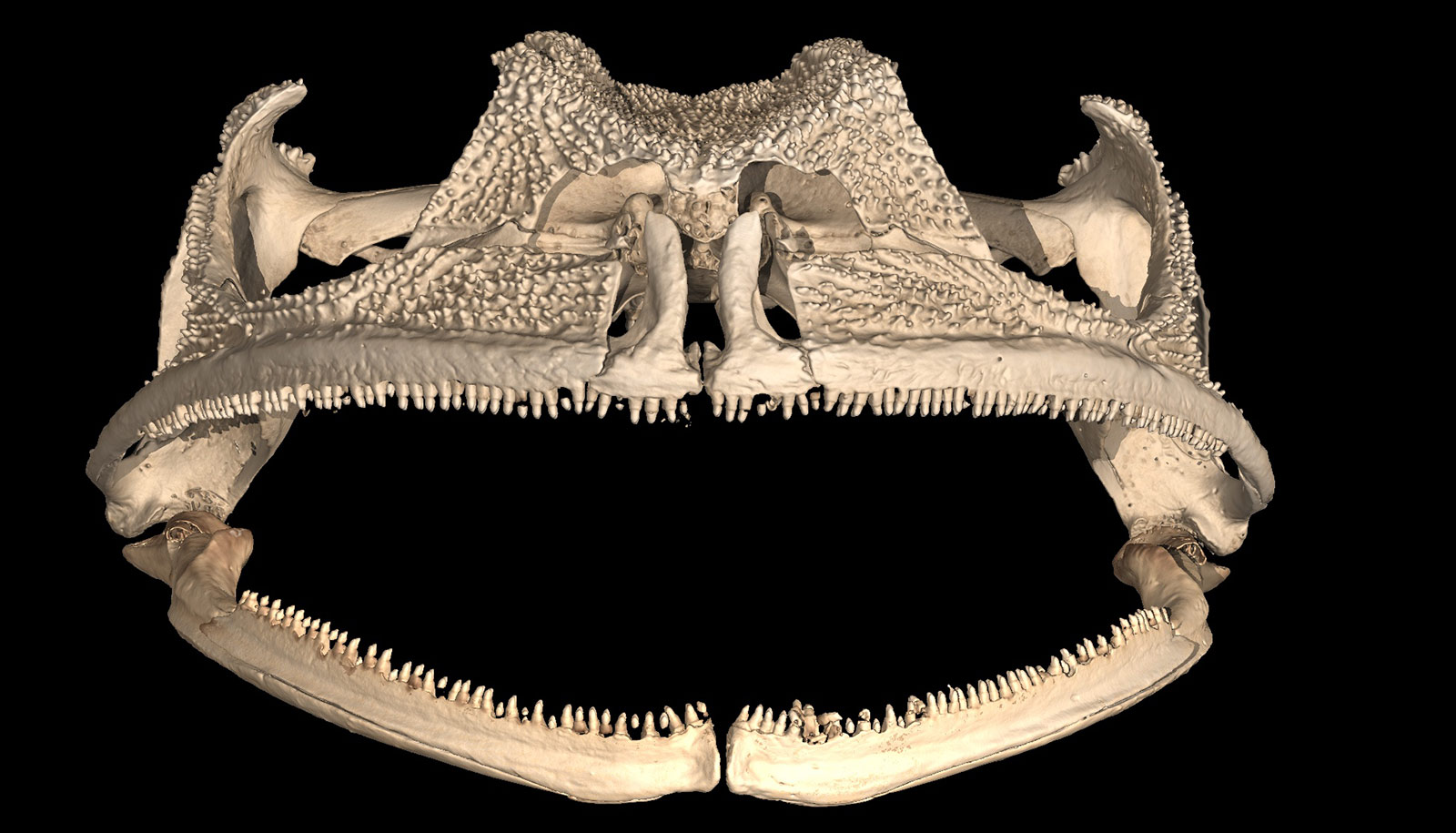
"We mammals transfer a lot of things that are important for immune function via breast milk. These frogs are transferring toxins through their eggs." Above, a female Little Devil frog. (Credit: Vincent Prémel)
Little Devil frogs feed their babies poison eggs for good reason
Two species of poison frogs from distant parts of the world both feed their young unfertilized, toxin-laced eggs. New research uncovers why.

Two types of poison frogs feed their hatchlings unfertilized eggs that are also laced with poisons, researchers report.
It’s likely their way of passing chemical defenses on to the next generation.
By comparing the brains of the two frogs with each other and with those of mammals, the researchers also discovered new clues that have bearing on the neural basis of motherhood itself.
For most frogs, motherhood begins and ends with the release of hundreds of eggs into a sizable body of water and then hopping or swimming away.
The Little Devil frog of Ecuador and the Climbing Mantella of Madagascar are two curious exceptions. The females of both poison frog species lay only a few eggs at a time, depositing each one into its own tiny pool formed from the cupped leaves of native rainforest plants. The mothers then spend months painstakingly feeding each tadpole unfertilized eggs until they are ready to leave their aquatic nests.
“This egg provisioning strategy is a way for these frogs to chemically defend their offspring sooner,” says O’Connell, an assistant professor of biology at Stanford University.

Very different poison frogs
Despite their convergent reproductive strategies, the Little Devil and the Climbing Mantella are about as different as two frog species can be. They each split from a common ancestor some 140 million years ago, around the time the first amphibians appeared, and have since evolved independently on opposite ends of the globe.
This early evolutionary schism, combined with their very un-froglike nursing strategy, makes them ideal for investigating the evolution of maternal care, O’Connell says.
“Maternal behavior has evolved only once in mammals,” she adds. “We wanted to know, are there different ways to build the maternal brain? Or do they all use the same mechanisms and molecules? These frogs allow us to investigate these questions.”
Another reason these frogs are valuable case studies for maternal care is that only the mothers are involved in rearing the tadpoles.

“Some frogs do have bi-parental care, but the neural mechanism behind that is complicated because you can’t really disentangle the relationship with the tadpole from pair-bonding between the parents,” says coauthor Nora Asher Moskowitz, a graduate student in O’Connell’s lab. “These frogs allow you to study maternal care in isolation.”
Members of O’Connell’s team spent months in the rainforests of Ecuador and Madagascar documenting the mother frogs nursing their tadpoles in the wild. This involved many early mornings spent loitering near known nests, waiting for the frogs to make their weekly feeding rounds.
“The hardest part was just sitting really, really still. It’s really hard to not scratch your face or move around,” Moskowitz says.
Upon arriving at a nest, the mother frogs would wait for a sign from their tadpole before depositing unfertilized eggs into the pool. For the Little Devil frog, this signal took the form of an intense wriggle. “The tadpoles do this very short but intensive vibration right next to the mom,” O’Connell says.
The researchers also collected brain tissue from the mothers and some of the unfertilized eggs the mothers had laid, samples of tadpole skin, and water from their nesting pools for analysis.
‘The maternal brain’
Back in the lab, the researchers found traces of alkaloid toxins on both the eggs and the tadpole skin, leading them to conclude that the tadpoles were obtaining their poisons primarily from the eggs the mothers provided. Previous studies had found poisons on the mother frogs and on the tadpoles, but not on the eggs themselves.
“Our finding is consistent with the idea that maternal provisioning evolved as a way to transfer nutrients but also various other goodies to your offspring,” says study first author Eva Fischer, a postdoctoral fellow in O’Connell’s lab. “We mammals transfer a lot of things that are important for immune function via breast milk. These frogs are transferring toxins through their eggs.”
An examination of the collected frog brains turned up other surprises. The poison frogs employed two brain regions known to be active in nursing mammals, birds, and fish.
“Both within frogs and also across vertebrates more generally, there seem to be shared brain regions that are being used to build the maternal brain,” Fischer says.
However, when the scientists looked for neurons that respond to oxytocin, a brain chemical or neurotransmitter that is important for promoting maternal care in mammals, only the Climbing Mantella frog tested positive. Oxytocin did not seem to be important for nursing in the Ecuadorian frogs.
“This study tells us that there is more than one way to promote maternal behavior in the brain because these frog species are using different sets of neurons to do it,” O’Connell says. “Their behaviors are similar, but under the hood, the neural mechanisms are very different.”
The research appears in the journal Current Biology. Additional coauthors are from Harvard University, Antananarivo University, the Centro Jambatu de Investigación y Conservación de Anfibios, and the Braunschweig University of Technology.
A Bauer Fellowship from Harvard University, the National Science Foundation, and National Geographic Society supported the work.
Source: Stanford University
The post Little Devil frogs feed their babies poison eggs for good reason appeared first on Futurity.
Share this article:
This article uses material from the Futurity article, and is licenced under a CC BY-SA 4.0 International License. Images, videos and audio are available under their respective licenses.
Related Articles:
Why frogs are green to the bone
July 14, 2020 • futurityOnly this one kind of frog has legit teeth
Nov. 24, 2021 • futurityLinks/images:
- https://www.futurity.org/new-species-butterfly-despite-gene-swap/
- https://www.futurity.org/formula-breast-milk-gut-bacteria-1904422/
- https://www.futurity.org/fathers-children-oxytocin-1363882-2/
- https://doi.org/10.1016/j.cub.2019.10.032
- https://news.stanford.edu/2019/11/21/motherly-poison-frogs-shed-light-maternal-brain/
- https://www.futurity.org/poison-frogs-mothers-unfertilized-eggs-2217992/
- https://www.futurity.org


